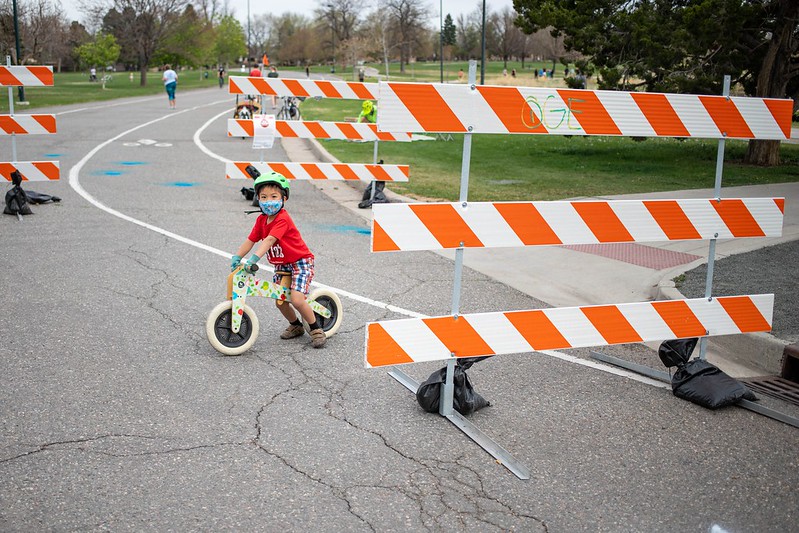For the third year, the Denver Streets Partnership released a report card grading Denver’s progress on meeting their own goals outlined in the Vision Zero Action Plan aimed at eliminating traffic fatalities and serious injuries. The Report Card focuses specifically on Denver’s progress meeting their goals on street safety improvements, such as building sidewalks and bike lanes. Our current street system is dangerous by design, and the City will not achieve zero traffic fatalities or serious injuries without these fundamental improvements.
Undoubtedly, Denver’s streets looked very different in 2020. With a sharp decrease in traffic early in the year and an undeniable need for more accessible open space, the City rose to the challenge by quickly rolling out Shared and Open Streets. We’re also celebrating 40 new miles of bike lanes. Denver received high marks for implementing corridor-wide traffic calming on Bannock Street, Colfax Avenue, and Santa Fe Drive. Walnut Street and Smith Road also received new treatments but these had a limited impact on safety.
However, the City continues to fail at providing some of our most basic but essential infrastructure — sidewalks. Only 6.32 miles of new sidewalks were built, falling well below the goal of 20 miles. Less than half a mile of these sidewalks were built along Denver’s High Injury Network, which represents the 5% of the streets where 50% of the traffic fatalities occur and includes streets like Colfax Avenue, Federal Boulevard, and Colorado Boulevard. Overall, traffic fatalities did decrease last year, with a total of 57 in 2020 compared to 71 in 2019. Notably, there was not a single traffic fatality in April 2020, at the height of the pandemic. This decrease is likely more indicative of fewer cars on the streets, rather than a result of infrastructure changes.
Despite the City’s improvements in their grades over time, traffic fatalities are not decreasing fast enough to hit the goal of zero fatalities in 2030. We are now in the third year of Denver’s five year Vision Zero Action Plan. To reach its goals, Denver needs to step up their efforts by:
- Addressing policy and funding challenges that are preventing the City from meeting their goals for building sidewalks,
- Establishing more aggressive targets for other street safety improvements, particularly corridor-wide traffic calming, pedestrian crossings, and intersection redesigns, and
- Enacting quick policy changes that will have a widespread impact, namely speed limit reduction.
So what grade did Denver earn this year? Based on our data, their progress earned them a B-. See the full report card and policy recommendations at denverstreetspartnership.org.
More details on some of the specific street safety improvements implemented in 2020 are available in the City’s 2020 Annual Report.

